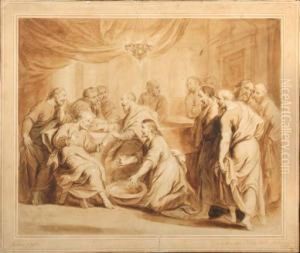Jacob Van Balen Paintings
Jacob Jansz van Balen was a prominent Flemish painter born in 1575 in Antwerp, in what is now modern-day Belgium. He was part of the Baroque movement that flourished in Europe during the 17th century, a period known for its exuberance and grandeur. Van Balen was particularly renowned for his intricate mythological and religious paintings, as well as his skillful portrayal of nude figures, which was highly celebrated during his time. His works are characterized by their detailed execution, vibrant colors, and dynamic compositions, embodying the essence of the Baroque artistic style.
Van Balen was apprenticed to Adam van Noort, who was also the master of Peter Paul Rubens, one of the most influential artists of the Baroque period. This connection significantly impacted van Balen's career, as Rubens' influence is evident in van Balen's work, particularly in the dynamic figures and dramatic use of light. However, van Balen also developed a distinct style, marked by a softer approach and a keen attention to detail. He was a prolific artist, producing a large body of work that included altarpieces, cabinet paintings, and collaborative works with other artists, including Rubens himself.
In 1609, Jacob van Balen became a master in the Antwerp Guild of St. Luke, which was a testament to his skill and reputation as an artist. He ran a successful workshop in Antwerp, which contributed significantly to the city's status as a major art center of the time. His works were highly sought after by patrons across Europe, and he trained several apprentices who would go on to become successful artists in their own right. Van Balen's legacy is preserved in his contributions to the development of Flemish Baroque painting, and his works continue to be celebrated for their beauty and craftsmanship. He died in Antwerp in 1634, leaving behind a legacy that would influence generations of artists.

